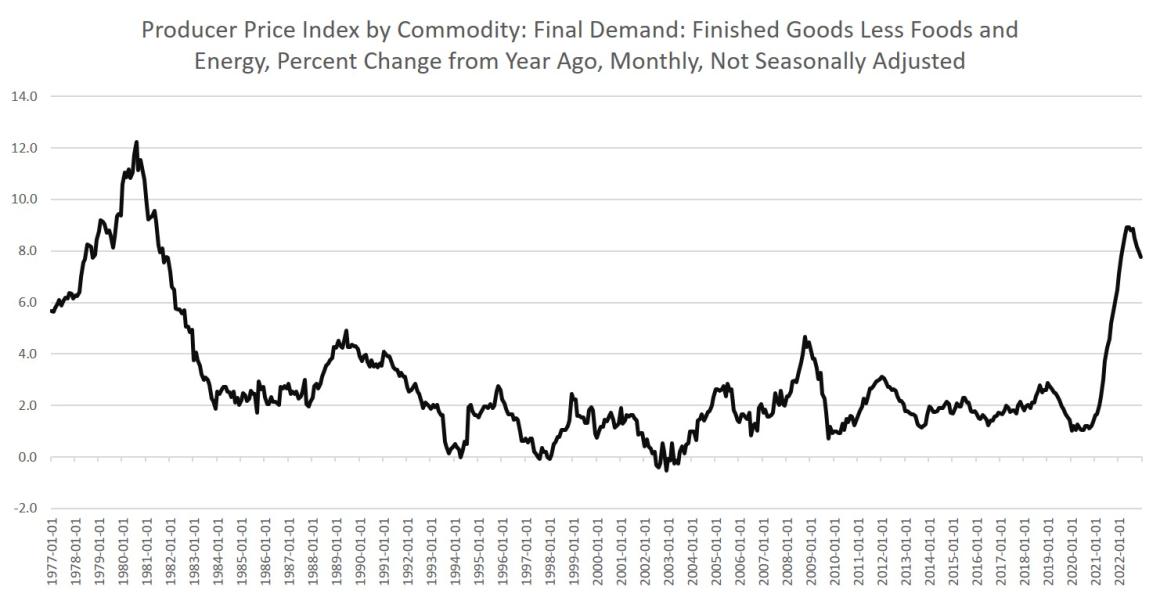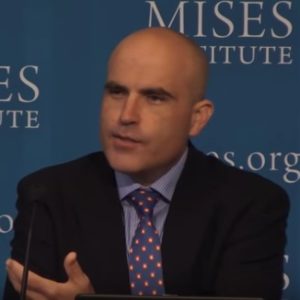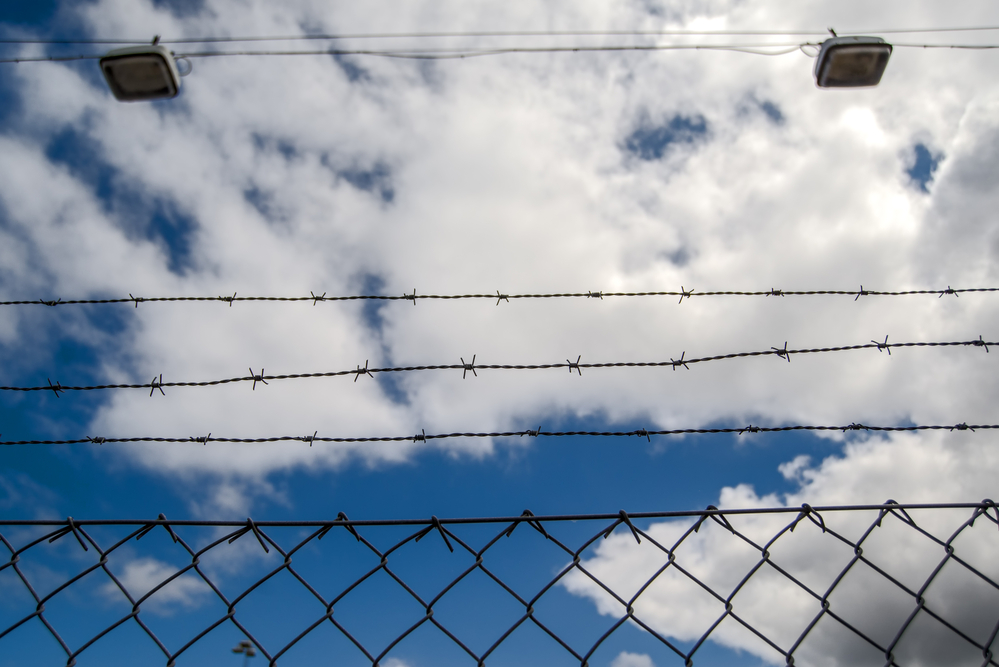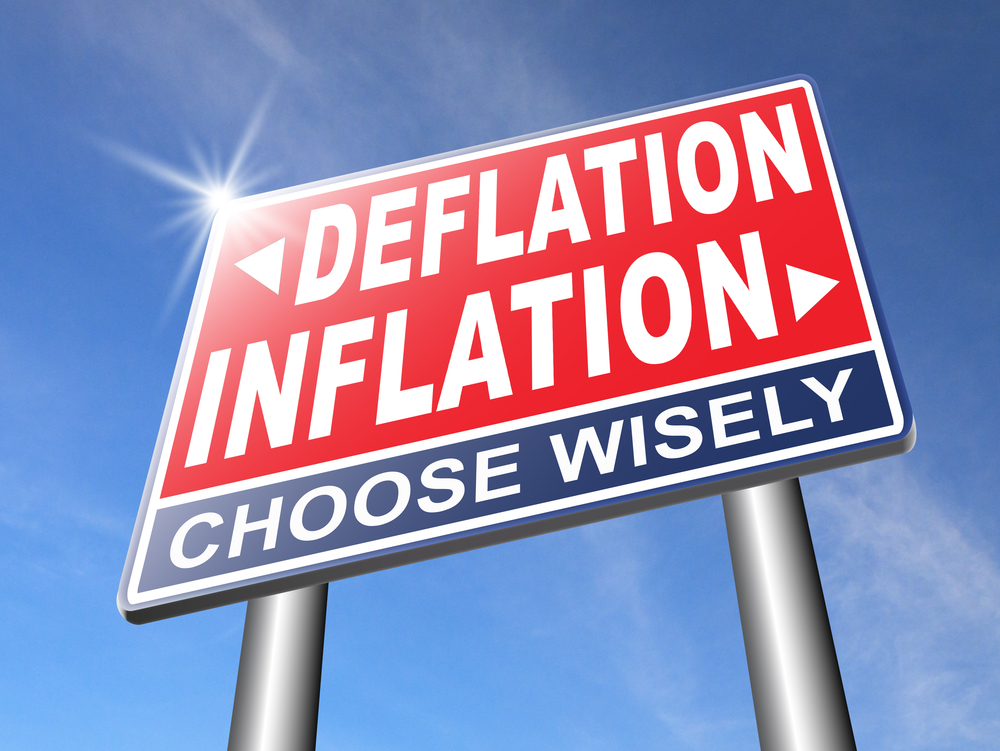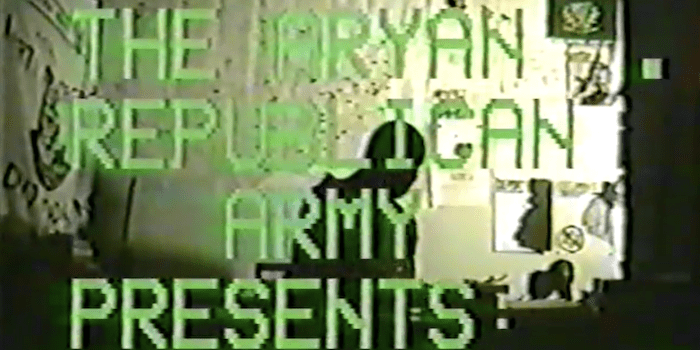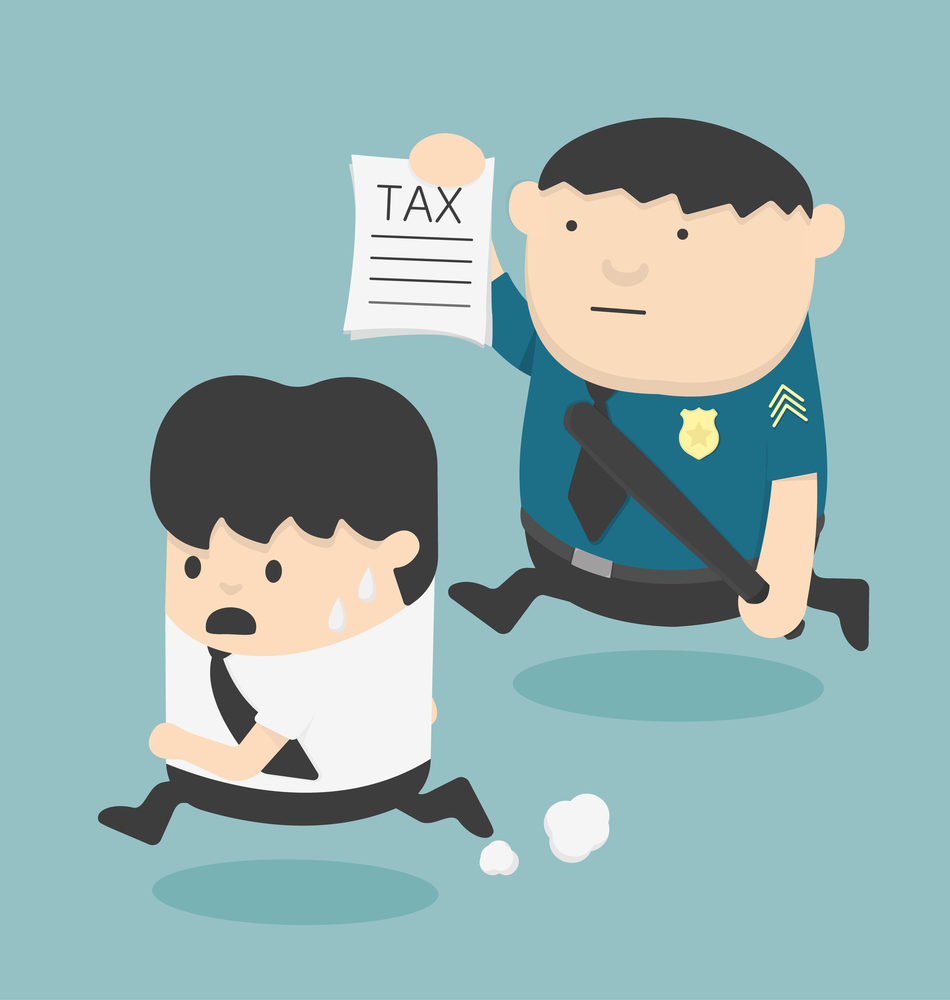The U.S. Bureau of Labor Statistics released new Producer Price Index (PPI) data on Wednesday, and it looks like the rate of increase in price inflation is slowing. Nonetheless, year-over-year price inflation in December remained near 40-year highs, and shows the marketplace is still dealing with the nearly six-trillion-dollar surge in the money supply that took place during 2020 and 2021.
The PPI is a measure of prices at the production phase of goods and services. Prior to 1978, the index was known as the Wholesale Price Index.
In December, year-over-year PPI growth came in at 6.2 percent which was a 21-month low. The PPI had most recently peaked in March of 2022 at 11.6 percent. December’s print was a (seasonally-adjusted) drop of 0.8 percent, month, over month. According to this measure, it does indeed seem that price inflation is slowing.
Of course, if we look at the index overall, and not just at rates of increase, we find wholesale prices are up 17 percent from where they were in early 2020. This generally reflects a similar trend in the CPI index which is up about 15 percent over the same period. Notably, the 17-percent increase in wholesale prices also outpaces the increase in the Dow which is up 14 percent over the same period.
At appears both workers and businesses need growth of 15 percent or more during this period just to keep up with consumer prices, and 17 percent or more to keep up with wholesale prices. These numbers also belie the popular narrative on the Left that consumer prices are only rising because of “greedflation” or corporate greed. By that narrative, inflation is fueled by sellers arbitrarily marking up their prices to exploit workers and consumers. Yet, if growth in wholesale prices is similar to consumer price growth, it’s hard to see how sellers are enjoying a windfall from rising prices. Rather, one could interpret this is a matter of sellers attempting to keep up with their own rising costs.
So why are PPI prices slowing now? There’s good reason to believe it reflects a slowing economy. Indeed, the economic data pointing toward a slowing economy and recessions continues to pile up. December’s Leading Economic Indicators measure is flashing recession. Homebuyers are canceling purchases at levels exceeding what we saw in 2008. The New York Fed’s recession modeling shows the highest recession probability since 1982. The yield curve is inverted to a depth not seen in more than 40 years.
Indeed, once PPI growth takes a sustained downward turn, the U.S. is often already in a recession or headed into one. We can see this pattern in 1982, 1990, 2000, 2008, and 2019. And now in 2022.
Expect Wholesale Prices to Fall as Easy Money Dries Up
Changes in wholesale prices often are described as an early indicator of where consumer prices are headed. One way to interpret this is to conclude that as wholesale prices change, retailers are forced to respond with higher prices themselves. This isn’t quite right, however. Ultimately, the prices of wholesale or “production goods” are actually determined by the prices of goods at the final retail, consumer stage. That is, it’s the reverse of the usual view of PPI inflation. After all, a retailer wouldn’t pay for materials or wholesale goods at all if he didn’t think he could sell them—or sell goods made with them—at a profit. Thus, beyond the short term, the prices of these production goods cannot be set without regard for the expected prices of retail goods. For example, a producer of wood furniture won’t buy certain woods if the prices of that wood make it impossible to sell furniture as a price consumers are willing to pay. If the furniture maker does make the mistake of paying for wood at unprofitable prices, then he will go out of business, and he will no longer demand any of that wood at all. Thus, those firms that provide unfinished wood wholesale to furniture makers cannot dictate prices to the furniture makers. Ultimately, it is the consumers of the finished furniture who dictate the price.
On the other hand, in an inflationary environment consumers, flush with cash from money-supply inflation will bid up the prices of furniture while depleting the furniture makers’ inventory. In turn, furniture makers will bid up the prices of wood in order to build more furniture. We’ll then see increases in both consumer prices and producer prices. It is possible we could observe cases in which changes in producer prices appear to cause changes in consumer prices. Thanks to competition at the retail level, many retailers may attempt to keep down prices to maintain customer loyalty, even while bidding up producer prices.
Nonetheless, given that producer prices are heavily affected by consumer spending, slowing growth in producer prices is exactly what we’d expect to see right now. After all, fundamentals in consumer buying power continue to show growing weakness. Credit card debt is mounting. Disposal income is falling. Real wages have fallen for twenty-one months in a row.
It appears that consumers are finally reaching their limits in terms of willingness to pay higher prices. The Wall Street Journal reported last week that unit sales of general merchandise fell 7 percent year over year in 2022, even though sales in dollar terms fell only 2 percent. Similarly, unit sales of food and beverage fell 3 percent during the same period, but dollars spent on these items rose ten percent.
In other words, people paid more money for goods, but bought fewer items. According to the Journal, many retailers now report they can’t afford to keep raising prices. The consumer well is drying up. That’s a recipe for slowing price inflation, both at the producer and consumer levels.
President Biden is likely to celebrate slowing inflation as some sort of great achievement on the part of the administration. But it’s just what we’d expect from from a weak economy.
This article was originally featured at the Ludwig von Mises Institute and is republished with permission.





